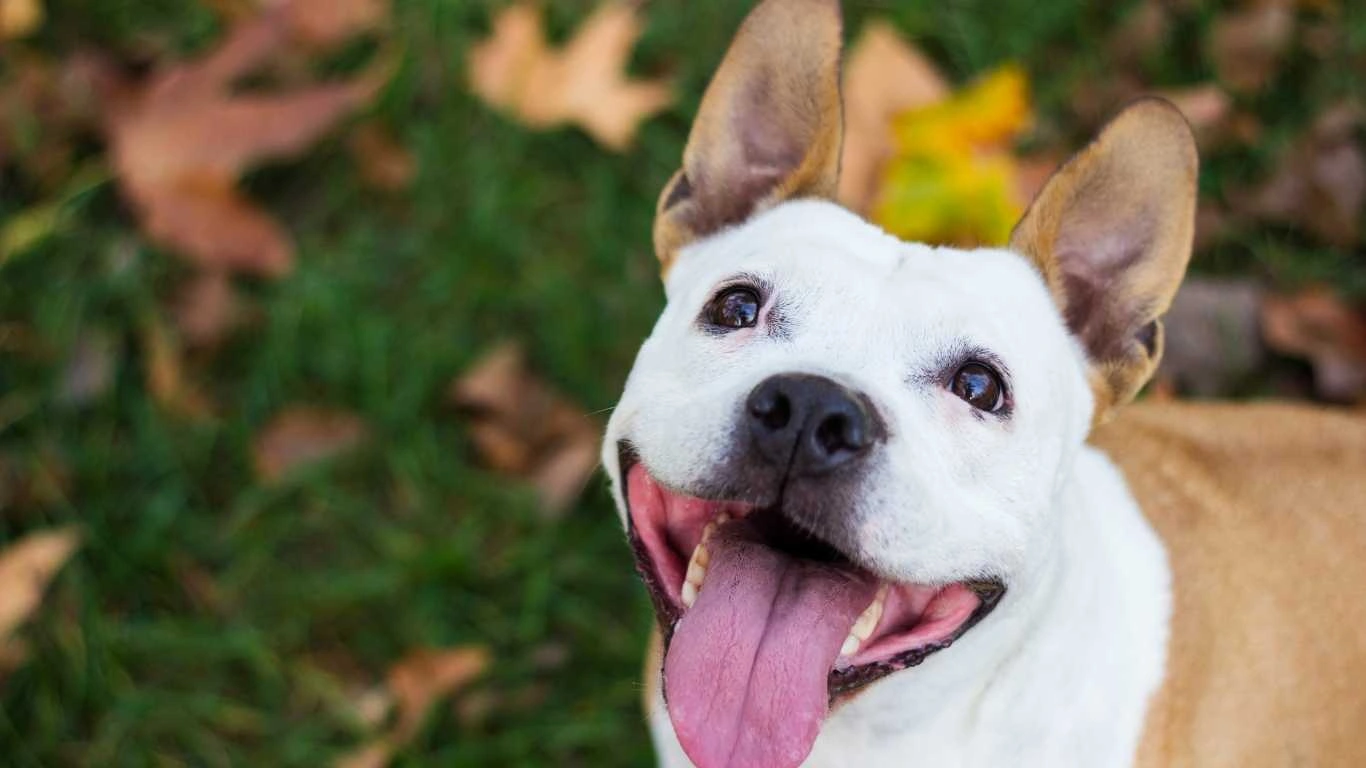Discover Why Can Dogs Eat Cooked Barley Safely and Benefit Today
Can dogs eat cooked barley? As an Animal Care Specialist who’s spent years working in pet clinics and shelters, I’ve seen my fair share of curious pet parents wondering about the safety of various human foods for their furry friends. Barley is often praised for its nutritional benefits in human diets, but when it comes to dogs, the question pops up quite a bit. So, let’s chat about barley—specifically cooked barley—and whether it’s a good, safe addition to your dog’s meal plan.
First off, barley is a whole grain packed with fiber, vitamins, and minerals. Many commercial dog foods include barley as an ingredient, so it’s not an uncommon grain for dogs to digest. But that doesn’t mean you should just toss a bowl of cooked barley into your pup’s dish without a second thought. There are some important details to keep in mind, and I’ll break down everything based on my experience caring for dogs in various settings.
Understanding Barley and Its Nutritional Value for Dogs

Barley is a cereal grain rich in dietary fiber, which can be beneficial for your dog’s digestion. It also contains essential vitamins like B vitamins, and minerals such as selenium, magnesium, and manganese. For dogs, these nutrients can support a healthy immune system, skin, coat, and overall vitality. One thing I always emphasize in my work is that dogs benefit from balanced nutrition—so grains like barley can complement a diet that includes protein and fats.
In shelters, many dogs come in with sensitive stomachs or poor nutrition history. Adding a bit of cooked barley to their meals helped improve their digestion and provided them with a gentle source of energy. But it’s vital to cook barley properly because raw or undercooked barley is tough to digest and could upset your dog’s stomach.
Is Cooked Barley Safe for Dogs?
The short answer is yes—cooked barley is generally safe for dogs in moderation. Cooking breaks down the tough fibers, making it easier for dogs to digest and absorb nutrients. When I’ve prepared meals for shelter dogs, I always ensure barley is thoroughly cooked, plain (no salt, butter, or seasonings), and served in small amounts mixed with their regular food. This way, it adds nutritional value without overwhelming their digestive system.
However, it’s crucial to avoid any barley dishes prepared with onions, garlic, or other ingredients toxic to dogs. Always stick to plain cooked barley if you’re feeding it at home.
Why You Should Be Careful With Barley Quantity
While barley is nutritious, too much of it can cause digestive troubles. Dogs’ digestive systems aren’t designed to handle large quantities of grains, and overfeeding barley might lead to:
- Diarrhea or loose stools due to excess fiber
- Weight gain if it replaces balanced portions of protein and fat
- Allergic reactions in some sensitive dogs
From my experience, introducing barley gradually and in small doses helps monitor how your dog responds. If you notice any digestive upset, it’s best to hold off and consult your vet.
How to Prepare Cooked Barley for Your Dog

Cooking barley for your dog is pretty straightforward, but here are a few tips to keep in mind from my time working hands-on with dogs:
- Rinse the barley under cold water to remove any dust or debris.
- Use a 3:1 water-to-barley ratio and cook until soft and chewy, which usually takes about 30-40 minutes.
- Let it cool completely before mixing it with your dog’s regular food.
- Keep it plain — no salt, oils, butter, or seasonings.
- Start with a teaspoon or two mixed in their meals and observe how your dog reacts.
In shelters, I often recommended this method to pet parents who wanted to supplement their dogs’ diets with grains for added fiber and energy. It’s a simple, affordable way to boost meal variety without risking their health.
Potential Benefits of Cooked Barley for Dogs

From my years working closely with dogs in shelters and clinics, I’ve noticed that when fed correctly, cooked barley can offer some real perks for our canine companions. Beyond just being a filler or carb source, barley brings some nutritional bonuses that can support your dog’s overall health.
Supports Digestive Health
One of barley’s standout benefits is its high fiber content. Fiber is a friend to the digestive system, helping regulate bowel movements and promoting healthy gut bacteria. Dogs with occasional constipation or irregular stools might find relief with a small portion of cooked barley added to their diet.
I remember a rescue dog I cared for who came in with a sensitive stomach. We started adding small amounts of barley to his meals, and within a couple of weeks, his digestion improved noticeably. Of course, every dog is different, so it’s important to introduce barley slowly and monitor their reaction.
Helps Maintain Healthy Weight
Barley’s fiber and low glycemic index mean it releases energy steadily, preventing blood sugar spikes. For dogs prone to weight gain or diabetes, incorporating barley in moderation can be a helpful way to manage their diet. In shelter environments, where some dogs are overweight or recovering from malnutrition, adding cooked barley in place of some higher-calorie ingredients often helped maintain a healthy balance.
Rich in Essential Nutrients
Barley isn’t just empty calories. It contains essential vitamins like niacin, thiamine, and folate, plus minerals such as iron and zinc. These nutrients support your dog’s metabolism, immune system, and skin health. It’s no wonder that many premium dog foods include barley or barley flour as part of their recipes.
When Should You Avoid Feeding Your Dog Cooked Barley?

While cooked barley can be a great supplement to your dog’s diet, it’s not for every dog or every situation. Here are a few scenarios when barley might be off the table:
Dogs With Grain Allergies or Sensitivities
Some dogs just don’t tolerate grains well. If your dog has shown signs of food allergies or sensitivities—like itchy skin, chronic ear infections, or digestive upset—it might be best to skip barley altogether. I’ve worked with dogs who had unexplained skin issues that cleared up only after removing grains, including barley, from their diets.
Dogs With Certain Medical Conditions
If your dog suffers from pancreatitis, kidney issues, or specific digestive disorders, it’s important to consult your vet before introducing barley or any new food. In such cases, a vet or veterinary nutritionist’s guidance is crucial to ensure the diet supports healing without causing extra strain.
Too Much Fiber Can Backfire
Although fiber is beneficial, too much of it can lead to problems like bloating, gas, or diarrhea. If your dog isn’t used to high-fiber foods, suddenly feeding large amounts of cooked barley could trigger stomach upset. Gradual introduction is key.
Tips From My Experience for Safely Feeding Barley to Dogs

Having spent years working in shelters and clinics, here are some practical tips I’ve gathered to help you introduce cooked barley safely and successfully:
- Start small: Mix a teaspoon or two of cooked barley with your dog’s regular food and watch for any reactions over the next few days.
- Stick to plain barley: Avoid adding salt, butter, oils, or spices that can upset your dog’s tummy or be toxic.
- Balance the meal: Barley should complement proteins and fats, not replace them entirely.
- Observe your dog: Monitor energy levels, stool consistency, and overall behavior. Any drastic changes mean it’s time to stop and consult your vet.
- Keep variety in their diet: Just like people, dogs thrive on diverse nutrition, so barley is one piece of the puzzle, not the whole meal.
In the shelter setting, I saw firsthand how small diet tweaks, like adding cooked barley, could make a noticeable difference in dogs’ energy and digestive health. But it always came down to careful observation and adjusting based on individual needs.
How to Incorporate Cooked Barley Into Your Dog’s Diet Long-Term

So, you’re thinking about adding cooked barley regularly to your dog’s meals? That’s a smart move when done thoughtfully. From my experience as an Animal Care Specialist, consistency and balance are the name of the game when introducing any new food — barley included.
Start Slow and Adjust as Needed
One thing I’ve learned over the years is that every dog’s digestive system is unique. Even if barley is safe for most dogs, how well your pup handles it might vary. I always recommend beginning with just a teaspoon mixed into their regular meal. Keep an eye on their stool quality, energy, and appetite over a week or two.
If everything looks good, you can gradually increase the amount, but never make barley the main ingredient. It’s more like a nutritional bonus that supports a well-rounded diet.
Mix It Up for Optimal Nutrition
Dogs need a balance of proteins, fats, carbs, vitamins, and minerals. Barley fills the carb and fiber part nicely, but it doesn’t replace the need for good-quality protein like chicken, beef, or fish. In shelters, where nutrition is sometimes a challenge, combining barley with lean proteins and vegetables helped many dogs gain strength and maintain healthy weight.
Rotating different grains—like brown rice, oats, or quinoa—can also keep your dog’s meals exciting and nutritionally diverse. Variety helps prevent the risks associated with food intolerances or allergies down the road.
Monitor for Any Changes
Adding anything new to your dog’s diet means you’re also a detective for their well-being. Watch for:
- Changes in stool consistency — diarrhea or constipation could be a sign to reduce or pause barley.
- Behavior changes — lethargy, loss of appetite, or signs of discomfort.
- Skin and coat condition — flaky skin or excessive scratching might suggest a sensitivity.
If you notice any of these, don’t hesitate to check in with your vet. Your vet can help pinpoint whether barley is a culprit or if something else is going on.
Common Questions About Can Dogs Eat Cooked Barley?

Can Puppies Eat Cooked Barley?
Puppies have delicate digestive systems and very specific nutritional needs. While cooked barley can be safe in very small amounts, it shouldn’t replace high-quality puppy food. If you’re considering barley for your pup, chat with your vet first to ensure it fits their growth needs.
Is Barley Better Than Other Grains for Dogs?
Barley is one of several grains that can benefit dogs, but “better” depends on your dog’s individual health. Barley has a good fiber content and low glycemic index, which helps maintain steady energy. Some dogs might do better with rice or oats, especially if they have allergies or sensitivities.
How Often Can I Feed My Dog Cooked Barley?
In most cases, barley can be offered a few times a week as a supplement to your dog’s regular diet. Overdoing it can lead to digestive issues or unbalanced nutrition, so moderation is key. Think of it as a healthy treat or meal enhancer, not a main course.
Wrapping Up and Next Steps
From my frontline experience in animal care, cooked barley can be a wholesome addition to many dogs’ diets when introduced carefully and thoughtfully. It offers fiber, vitamins, and minerals that support digestion and overall health. But remember, it’s never a one-size-fits-all answer—knowing your dog’s unique needs and consulting your vet remain top priorities.
Keep things simple, watch your dog closely, and don’t hesitate to ask for professional advice if you’re unsure. Your dog’s health and happiness depend on the love and care you put into every meal.
References
Disclaimer
This article is for informational purposes only and is not a substitute for professional veterinary advice. Always consult your veterinarian before making any changes to your pet’s diet or health care routine. Individual dogs may have specific dietary needs or medical conditions that require personalized care.






